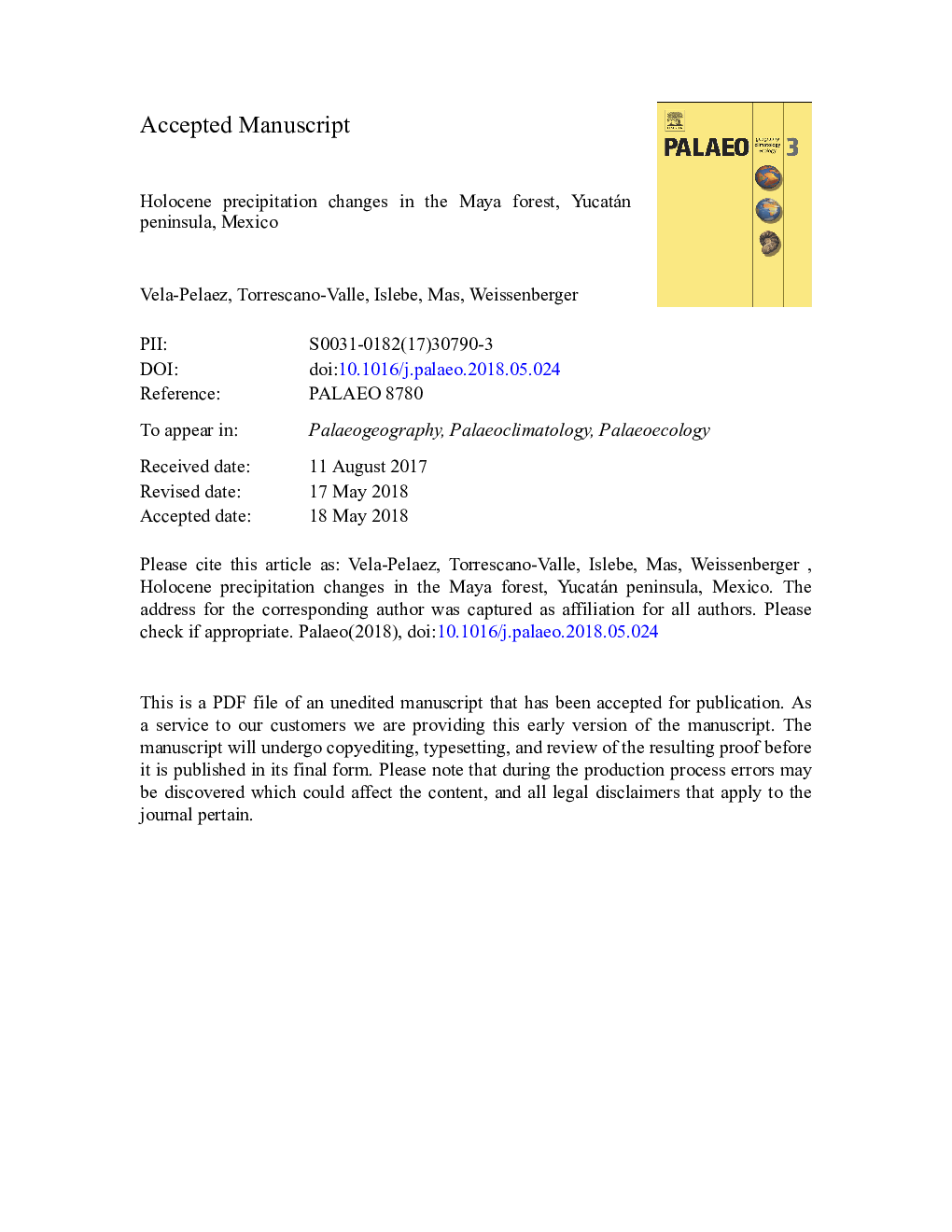| Article ID | Journal | Published Year | Pages | File Type |
|---|---|---|---|---|
| 8868122 | Palaeogeography, Palaeoclimatology, Palaeoecology | 2018 | 28 Pages |
Abstract
Holocene fossil pollen samples (nâ¯=â¯38) from Lake Silvituc in Mexico were analyzed with the analog technique using modern pollen samples (nâ¯=â¯98) of the Yucatán Peninsula, Mexico. Calculated dissimilarity indices allow us to reconstruct the vegetation and to develop a precipitation record for the last 7900â¯years. The Middle Holocene shows a gradual increase of precipitation and a marked drop in reconstructed precipitation around 4200â¯BCE. During the Late Holocene two phases were identified: Phase I (2500â¯BCE - 1â¯CE) shows the greatest increase in precipitation with four peaks around 1200â¯BCE, 650â¯BCE, 200â¯BCE and 1â¯CE. Also a period of increased precipitation resulted for the period between 200 and 500â¯BCE. Periods of reduced precipitation were detected at 900-1100â¯BCE, 500-600â¯BCE and 100-190â¯BCE. Phase II (1-2000â¯CE) encompasses several strong dry events during the following periods: 150-300â¯CE, 750-900â¯CE, 1050-1180â¯CE, and 1530-1580â¯CE. A strong reduction of 32% in precipitation in the late Preclassic Period (100-300â¯CE) was detected. Non-analogs of Phase II are associated with periods of reduced precipitation and fall into time periods of extended droughts related to the Maya Late Classic and the Little Ice Age. A limiting factor on the use of analogs for tropical forests is that a combination of different analogs for the same fossil pollen signal exists. Interpretation under these circumstances requires good knowledge of the ecology of the taxa and a priori characterization of the modern samples.
Related Topics
Physical Sciences and Engineering
Earth and Planetary Sciences
Earth-Surface Processes
Authors
Vela-Pelaez A.A., Torrescano-Valle N., Islebe G.A., Mas J.F., Weissenberger H.,
